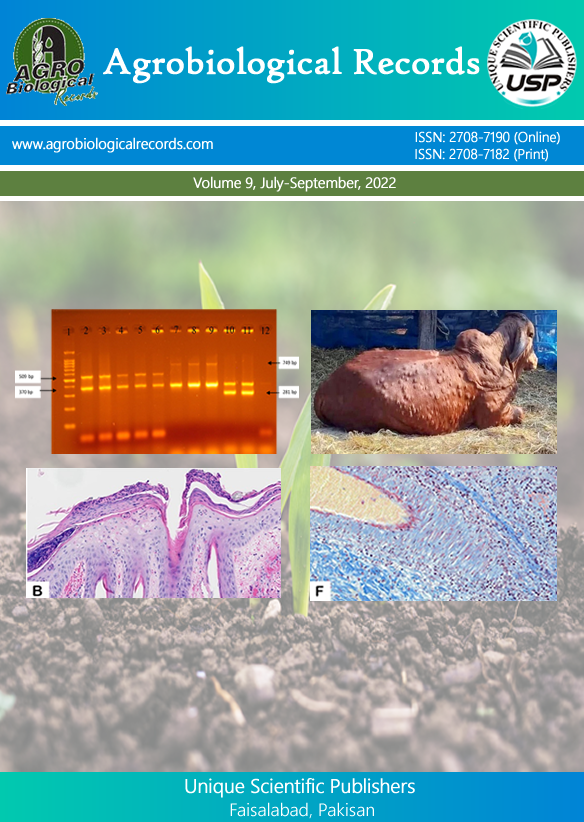
Mahmuda Naznin Nupur 1 , Farzana Afroz 1 , Md. Khaled Hossain 1 , S.M. Harun-ur-Rashid 2 , Md. Gausur Rahman 2 , Md Kamruzzaman 3 , Khadija Al Ferdous 4 and Md Atiqul Haque
1Department of Microbiology, 2Department of Pathology and Parasitology, 3Department of Dairy and Poultry Science, 4Department of Anatomy and Histology, Faculty of Veterinary and Animal Science, Hajee Mohammad Danesh Science and Technology University, Dinajpur-5200, Bangladesh 5Key Lab of Animal Epidemiology and Zoonosis, Ministry of Agriculture and Rural Affairs, College of Veterinary Medicine, China Agricultural University, Beijing, 100193, China
*Corresponding author: atique@hstu.ac.bd
Pet bird rearing has become increasingly popular recently, and owners often raise them near to their homes. However, zoonotic infections can spread from pet birds. Thus, this cross-sectional study explored the prevalence of potentially zoonotic bacterial pathogens in household pet birds, risk factors for transmission, and antibiotic susceptibility of isolated bacteria. A total of 240 samples were analyzed, including cloacal swabs (n=80), oral swabs (n=80), and feces (n=80) from pigeons, parrots, budgerigars, and quails. Using cultural and biochemical assays five species of potential zoonotic bacteria namely E. coli, Salmonella spp., Shigella spp., Klebsiella spp. and Staphylococcus spp. were detected. The prevalence of potential zoonotic bacteria was not statistically significant (P>0.05) across age, sex, breed, body weight and diet, while the prevalence was significantly (P<0.05 or P<0.01) correlated with hygienic condition and vaccination. The overall prevalence of bacterial isolates from pet birds were E. coli (19.6%) Salmonella spp. (13.3%), Shigella spp. (14.6%), Klebsiella spp. (15.4%) and Staphylococcus spp. (15%). Quail had the highest prevalence of E. coli, Salmonella spp., Shigella spp., Klebsiella spp., and Staphylococcus spp., with 33.3%, 25%, 25%, 29.1%, and 29.1%, respectively. Sample-wise prevalence of Salmonella spp. and Staphylococcus spp. was highly statistically significant (P<0.01) in pigeon, while prevalence of E. coli, Shigella spp., Klebsiella spp., and Staphylococcus spp. was statistically significant (P<0.05) in budgerigar, pigeon, parrot, and quail. The antibiotic sensitivity test with 18 antibiotics demonstrated that bacterial isolates were most sensitive to GEN (83.1%), followed by LEV (81.5%), CIP (80.4%), KAN (77.8%), and CFM (59.3%). Likewise, there was 100% resistance to PG, AMX, BAC followed by CH (98.4%), COX (95.2%), CN (90.5%), TET (77.2%) and VAN (75.7%). The findings of this study suggest that the emergence of multidrug-resistant bacterial isolates into pet birds in Dinajpur, Bangladesh, poses a risk to the wellbeing of both owners and the general populace.